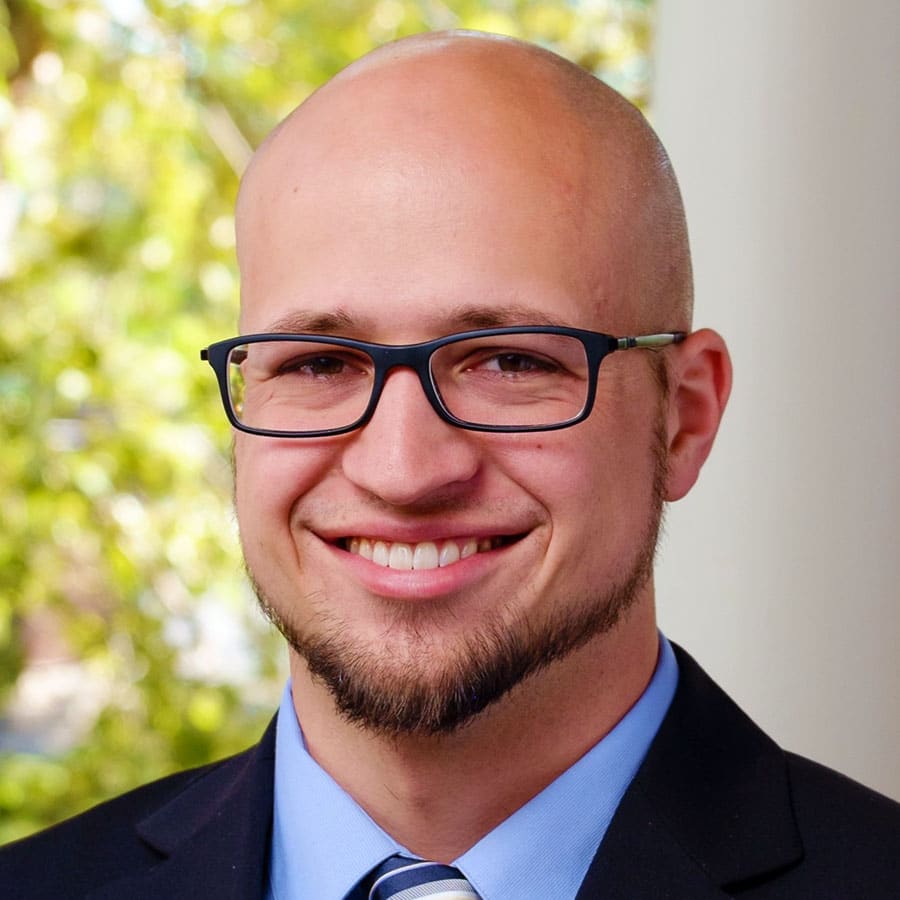In April 2020, KnowledgeWorks published policy guidance in response to the school closures brought on by COVID-19, Restoring Hope and Seizing Opportunity in the Face of Crisis. The report highlighted both short- and long-term strategies for states to consider as they grappled with the challenges of the pandemic. A year later, we are revisiting the guidance to highlight areas where the US has begun building the momentum needed to both respond to the challenges of the past year and chart a path towards creating a more personalized K-12 education system.
States have begun transforming their policies to provide bright spots in flexibilities around seat time. These bright spots include creating opportunities for state bodies to review existing policies, giving innovative states and districts flexibility to think differently about seat time and redefining seat time all together.
Prior to the pandemic, states had already begun to rethink the way that time could be used in K-12 schools to credential learning. Traditionally, credit for student learning has been awarded to students based on a certain number of hours and days within a school building each year and the attainment of a passing grade. States across the country responded to the abrupt closure of schools with temporary guidance to give schools the flexibilities necessary to fulfill state seat time requirements in a disrupted education system.
In 2019, North Dakota passed legislation to move instructional time to a calculation of student engagement rather than hours spent in the classroom. The law now sets minimum hour standards for both general education, CTE and science courses. The Department has also issued guidance defining student engagement as a student’s active involvement in learning essential material driven by state content standards.
Arkansas has been offering waivers to schools through a variety of programs for over 20 years. The Department of Education (ADE) provides a website with clear and easily accessible information on the waiver process and rewrote their accreditation standards using what they learned from the waiver requests. Additionally, in 2017 the legislature passed Act 872 authorizing schools to submit plans to award credit based on the demonstration of mastery rather than seat-time. During the pandemic, the state released its Ready for Learning Plan leveraging and streamlining their existing waiver programs to allow schools to quickly adapt to the demands of remote and hybrid learning.
As the pandemic recedes and schools reopen for full in-person instruction, policymakers and educators should consider one of the core lessons from the pandemic: What matters most is how much students are learning – not how much time they spend in a chair within the four walls of a school. Learning can and does take place anywhere – in a classroom or at home, through in person instruction or virtually, and in a school career and technical lab or in an apprenticeship at a local business. It can happen through direct in-person instruction or via a virtual lecture.
As states grapple with accelerating student learning this summer and fall, they must take this lesson to heart and consider how best to design student-centered systems that prioritize learning outcomes over seat time while ensuring that they do not reduce instructional time overall. This will require policies that enable students to pursue meaningful high-quality learning experiences both inside and outside the classroom, including learning experiences designed in partnership with local businesses, community organizations and postsecondary institutions.
States have begun to remove the barriers of seat time through legislation, guidance or changes to state code over the past year. They are rethinking seat time using a variety of strategies ranging from providing additional waiver opportunities to individual schools and districts to rethinking the state’s very definition of hours of instruction. We hope these examples are instructive and help states begin to consider policy changes that provide schools greater flexibility to design student-centered and resilient education systems.
This year, Arizona passed HB 2862, which allows a school district or charter school to adopt its own unique instructional time model to satisfy the state’s requirements for annual daily membership, attendance and student count as defined by the state. The bill lays out the requirements that districts must meet to adopt a new model, such as holding public hearings to inform districts of upcoming changes, and realigns the definition of “instructional hours” and/or “instructional time” to meet those adopted by new models. Under the law, students must still receive a minimum number of instructional hours, but such time may be satisfied through direct instruction, project-based learning, independent learning or mastery-based learning through both in-person or remote instruction. Additionally, schools will be permitted to reallocate any minimum instructional time to courses that may necessitate additional time for deeper learning or remediation.
Florida recently considered building on its existing Competency-Based Education Pilot Program, which began in the 2016-17 school year, through SB 1184 in 2021. This bill, which ultimately did not pass, would have broadened the scope of the pilot by creating a Schools of Innovation program, allowing participants to request waivers from both state and local level policies that may hinder implementation, and developing a new mechanism to address seat-time issues. The bill also drew on the example from the work of Utah’s State Board of Education and would have created a more expansive definition of “learner-validated measures” of learning which would have included online, blended and competency-based learning programs. Districts could have applied to become schools of innovation, which would have required the district to specify the learner-validated measures to use instead of traditional instructional hours.
Minnesota’s legislature currently has companion bills pending in both legislative chambers (SF 1441/HF 1644) that would extensively broaden the definition of “hours of instruction” in state code. The new proposed definition includes a broad range of educational opportunities that prepare students for success by empowering them to develop the knowledge and skills needed to learn, engage civically and lead meaningful lives. The bill also renames the state’s Innovation Research Zones Pilot while streamlining requirements to encourage participation and retaining provisions that offer flexibility.
Montana passed comprehensive legislation in March 2021 that significantly opened up possibilities for new learning models in the state, including several key definition changes. HB 246 broadens the concept of instruction to shift the focus to students by redefining the term “pupil instruction” to focus on any instruction pupils receive under the supervision of a teacher. The new definition also includes a broad range of activities under pupil instruction such as work-based and experiential learning. The act also extends the authority of school district trustees by allowing them to:
In 2018, New Hampshire authorized the Learn Everywhere Program through SB 435. This program directed the state board of education to adopt rules for approving alternative programs for granting credit leading to graduation. State rules subsequently adopted in late 2020 established a framework for a groundbreaking program to credential student learning regardless of where it occurred. While New Hampshire still requires schools to offer a minimum number of hours and days of instructional time, the state’s current definition of instructional time allows for significant flexibility. The state education agency has also clarified that the Learn Everywhere Program doesn’t impact school funding as schools participating will continue to receive the same funding as they did prior to participation in the program.
South Carolina is currently considering allowing schools classified as “competency-based” to request additional flexibilities. The proposed bill, H.3883, would also broaden the definition of “instructional day” to include in-person, virtual, self-guided and experiential learning for all schools. It also aligns other related education definitions with this new instructional day definition and expands flexibility regarding the length of school days. The bill would also allow all schools to vary the length of the school day and provide instructional days at any time throughout the year. The state has also built momentum in both strengthening personalized, competency-based learning and providing seat time flexibilities by enacting H.3589 into law during this legislative session. This law allows local districts to create multiple schools of innovation that are exempt from applicable state statutes and regulations, which includes seat time requirements.
The Utah State Board of Education has addressed seat time requirements by redefining key terms in state regulation. In response to a request from the state’s competency-based advisory board, in 2020 the board of education addressed several key terms, replacing “nontraditional programs” with “learner-validated programs,” updating the definition of “face-to-face instruction” to reflect an “attendance-validated program,” and replacing the term “instructional hours” with “hours of educational services.” Educational services are also redefined more broadly under the changes to include the provision of high-quality instruction and personalized learning supports for each student, as well as implementation of evidence-based student health and wellness practices.
Washington passed SB 5249 this spring to begin implementing the recommendations of its Mastery-based Learning Work Group, which included the expansion of mastery-based credits to meet graduation requirements and the creation of a new task force to examine credit hour definitions and better align them with the state’s Profile of a Graduate. The state legislature created this working group, which was convened by the state board of education, in 2019 through HB 1599 to identify barriers to mastery-based learning and explore pathways to increase student access to pathways aligned to a student’s career and postsecondary objectives.
KnowledgeWorks – State Policy Framework for Personalized Learning
This framework is designed to help states build awareness of what it will take to evolve policy systems to support exploration, replication and ultimately statewide transformation to ensure personalized learning opportunities for all students. https://knowledgeworks.org/work/policy-framework/
KnowledgeWorks – Navigating the Future of Learning: A Strategy Guide
Based on KnowledgeWorks’ 2018 forecast, Navigating the Future of Learning, this strategy guide is designed to help K-12 educators, postsecondary education institutions and community-based learning organizations take action with the future in mind. https://knowledgeworks.org/resources/navigating-future-learning-strategy-guide/
Foundation for Excellence in Education – Debunking the Myth of Seat-Time: A National Analysis of Seat-Time Requirements for Credit
Research by ExcelinEd examines seat-time requirements for awarding credit and graduation, revealing that all 50 states and Washington, D.C., have either fully or partially authorized schools to shift from focusing on seat-time to mastery. https://www.excelined.org/wp-content/uploads/2019/11/ExcelinEd.Innovation.NextGenerationLearning.SeatTimeReport.pdf
FullScale, formerly the Aurora Institute – Determining Attendance and Alternatives to Seat Time
This document from FullScale provides a range of examples of how states are creating attendance policies to support learning remotely as well as competency-based attainment. https://aurora-institute.org/wp-content/uploads/determining-attendance-and-alternatives-to-seat-time.pdf
Education Commission of the States – Response to Request for Information on Modifying Attendance Policies
The Education Commission of the States conducts research on policy changes across all 50 states and provides responses to states in the form of short memos, among other resources. This document provides examples on how states had addressed attendance policies as of fall 2020. https://www.ecs.org/wp-content/uploads/State-Information-Request-Modifying-Attendance-Policies.pdf
Education Commission of the States – 50 State Survey of Instructional Time Policies
The Education Commission of the States conducts 50 state comparisons of a wide range of education policy issues. This table details state instructional time policies as of April 2018.
https://ecs.secure.force.com/mbdata/mbquest4ci?rep=IT18A
This article was co-written with former KnowledgeWorks Senior Advisor of Policy and Advocacy Karla Phillips-Krivickas.


